Results
-
 £7.00
£7.00Philharmonic Phun Phest - Offenbach
This is a clever medley of classical favorites that kicks off with a grandiose setting of the opening of Bach's Toccata and Fugue in D Minor, continues with excerpts from Johann Strauss' beloved Blue Danube Waltz and the opening theme of Mozart's Eine Kleine Nachtmusik and concludes with the rollicking Can-Can from Gait Parisienne. A light-hearted medley that is a delight to experience and a perfect way to introduce these classic pieces to young performers. Duration: 2'20" Key: Bb Ranges: Trumpet - D; Horn - D; Trombone - C
Estimated dispatch 12-14 working days
-
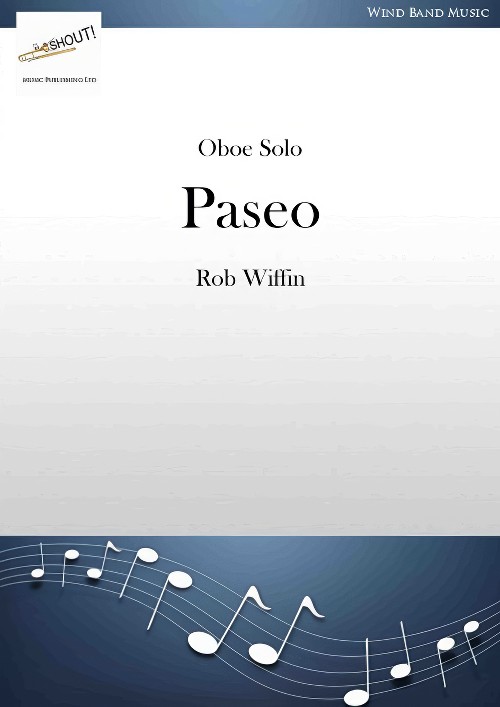 £35.95
£35.95Paseo (Oboe Solo with Concert Band - Score and Parts) - Wiffin, Rob
Paseo is a Spanish word for a leisurely walk or stroll. The soloist takes the musical line for a walk with no great sense of hurry. There is one moment where the pleasantness of the stroll is threatened but it quickly passes and the good mood is resumed. Technically this needs a good sense of cantabile and control over the range from low D to D two octaves higher.In order to allow the oboe soloist to sing through without fighting the accompaniment, the saxophones, trumpets and percussion have been omitted.Duration: 4.15
Estimated dispatch 7-14 working days
-
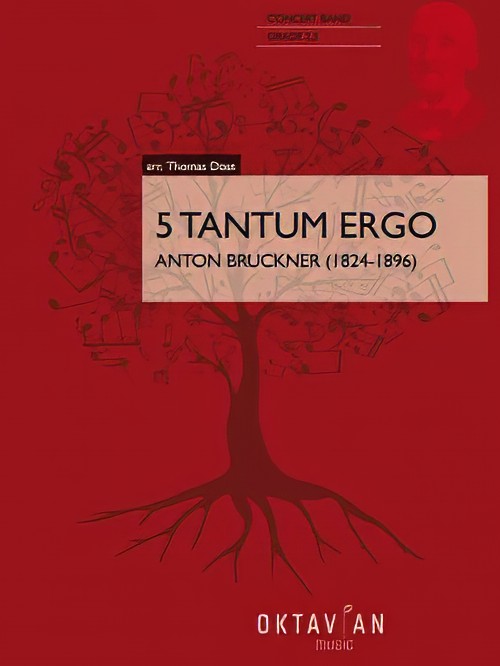 £95.99
£95.995 Tantum Ergo (Concert Band - Score and Parts) - Bruckner, Anton - Doss, Thomas
Anton Bruckner (b. 4.9.1824, Ansfelden, d. 11.10.1896, Vienna) didn't have it easy. Throughout his life, the Austrian composer was plagued by self-doubt. Anton Bruckner came from a simple, rural background. After the death of his father, he was accepted as a choirboy at the monastery of Sankt Florian in 1837. After several years as a school assistant and his own organ and piano studies, he first worked as organist in St. Florian, then from 1855 as cathedral organist in Linz. Introduced to music theory and instrumentation by Simon Sechter and Otto Kitzler, he discovered Richard Wagner as an artistic role model, whom he admired throughout his life and also visited several times in Bayreuth. In 1868 Anton Bruckner became professor of basso continuo, counterpoint and organ at the Vienna Conservatory; ten years later court organist; and in 1891 finally honorary doctor of the University of Vienna. He was considered an important organ virtuoso of his era, but had to wait a long time for recognition as a composer. It was not until Symphony No.7 in E major, composed between 1881 and 1883, with the famous Adagio written under the effects of Wagner's death, that he achieved the recognition he had hoped for, even if he was reluctant to accept it given his inclination towards scepticism and self-criticism. Anton Bruckner was a loner who did not want to follow a particular school or doctrine. He composed numerous sacred vocal works, such as his three masses, the Missa Solemnis in B flat minor (1854), the Te Deum (1881-84) and numerous motets. As a symphonic composer, he wrote a total of nine symphonies and many symphonic studies from 1863 onwards, tending to revise completed versions several times over. Bruckner's orchestral works were long considered unplayable, but in fact were merely exceptionally bold for the tonal language of their time, uniting traditions from Beethoven through Wagner to folk music, on the threshold between late Romanticism and Modernism. Hymns for four-part mixed choir a cappella (1846, St. Florian) No. 1 in E flat major (WAB 41/3): Quite Slow No. 2 in C major (WAB 41/4): Andante No. 3 in B flat major (WAB 41/1): Slow No. 4 in A flat major (WAB 41/2): Slow Hymn for five-part (SSATB) mixed choir and organ No. 5 in D major: Solemnly They are simple works, completely subordinate to their liturgical use, which nevertheless already show numerous characteristics of personal expression. These small pieces were able to stand up to the harsh scrutiny of the mature master: in 1888, Bruckner subjected them to a revision in which he made only minor corrections.Duration: 11.00
Estimated dispatch 7-14 working days
-
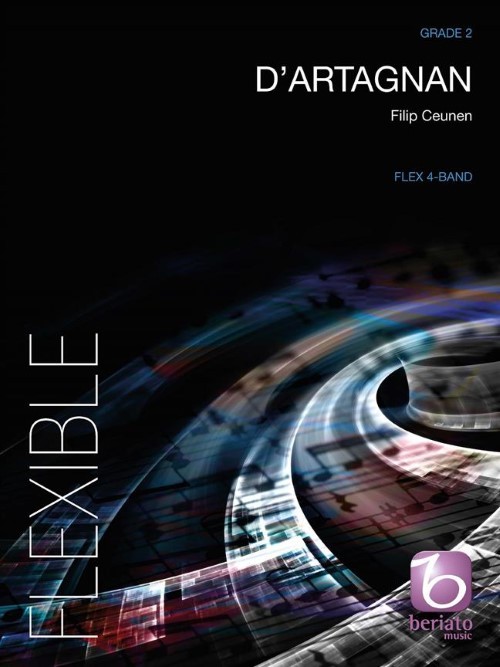 £60.99
£60.99D'Artagnan (Flexible Ensemble - Score and Parts) - Ceunen, Filip
D'Artagnan, a short work for flexible youth band is the follow-up to a previous piece from the same series, The Three Musketeers. It was commissioned by the 1-1-1 orchestra workshop in Wehr, Germany, where it premiered on 5th May 2019 at a play-in for young musicians. D'Artagnan describes the lively and whimsical personality of this young, fourth musketeer. It is a joy to play and listen to! Duration: 2.30
Estimated dispatch 7-14 working days
-
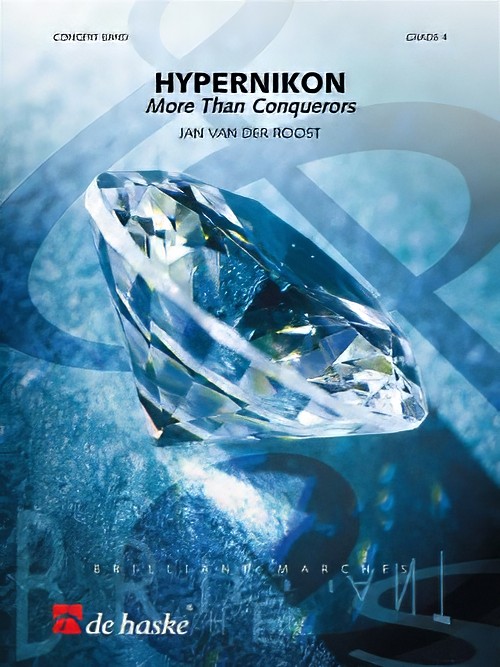 £89.99
£89.99Hypernikon (More Than Conquerors) (Concert Band - Score and Parts) - Van der Roost, Jan
The Greek word hypernikon roughly translates as More Than Conquerors, the motto of Gordon College in Wenham, Massachusetts, the commissioner of this piece. The work is inspired by David Rox's very own name, the first two letters of his name, D and A, sets the first theme is in D major, with these notes being the tonic and dominant of the scale. After the stately intrada, the tempo accelerates and the festive feel of the march emerges. The trio melody serves as a beautiful contrast before finally ending with the opening theme in a grand tutti.Duration: 3.45
Estimated dispatch 7-14 working days
-
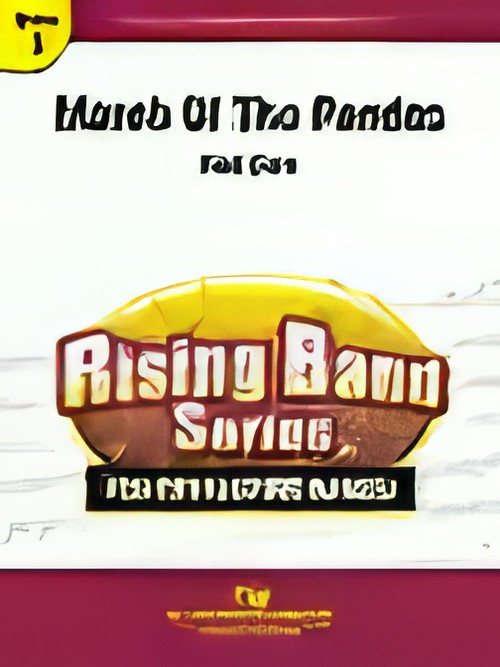 £49.00
£49.00March of the Pandas (Concert Band - Score and Parts) - Clark, Paul
Imagine a band made up of panda bears marching in a parade. They'd be marching, and they'd be playing, but there would be a few cute and funny moments because, well, they're pandas, and they can't help it! This is a great little march that's fun for everyone. Your audiences and your band (especially the percussionists) will love it. Lots of musical fun! Un-bear-ably enjoyable! Duration: 2.15
Estimated dispatch 7-14 working days
-
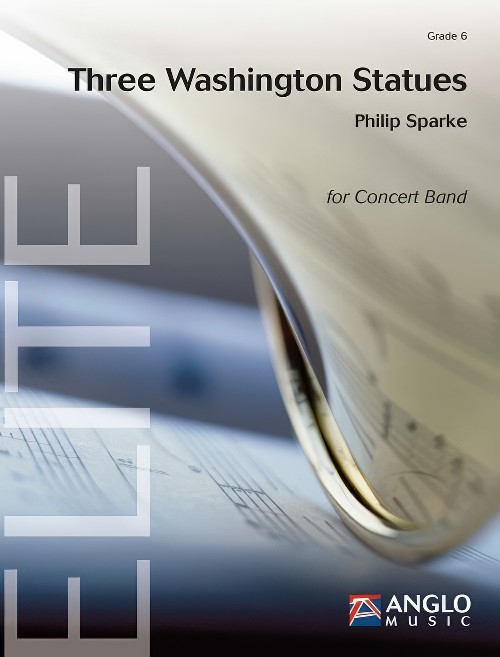 £164.99
£164.99Three Washington Statues (Concert Band - Score and Parts) - Sparke, Philip
Three Washington Statues was commissioned by the United States Army Band "Pershing's Own", led by Colonel Thomas H. Palmatier. Washington D.C. contains some of the world's most iconic monuments, memorials and statues. Philip Sparke has chosen three of these as the inspiration for this piece: 'The Lincoln Memorial' in the form of a Greek Doric temple in which the composer depicts the grandeur of this monument; 'The Martin Luther King, Jr. Memorial' on which steps the iconic speech 'I have a dream' was given - the music is both reverential as well as powerful referring to Martin Luther Kings' speech; and the 'Encore' statue in memory of the world famous African-American composer, pianist and bandleader Duke Ellington. In this final movement, Philip Sparke catches the virtuosic, energetic and unique dynamism of Ellington's' music. Three Washington Statues was commissioned by the United States Army Band "Pershing's Own", led by Colonel Thomas H. Palmatier. Washington D.C. contains some of the world's most iconic monuments, memorials and statues. Philip Sparke has chosen three of these as the inspiration for this piece: 'The Lincoln Memorial' in the form of a Greek Doric temple in which the composer depicts the grandeur of this monument; 'The Martin Luther King, Jr. Memorial' on which steps the iconic speech 'I have a dream' was given - the music is both reverential as well as powerful referring to Martin Luther Kings' speech; and the 'Encore' statue in memory of the world famous African-American composer, pianist and bandleader Duke Ellington. In this final movement, Philip Sparke catches the virtuosic, energetic and unique dynamism of Ellington's' music.Duration: 8:45
Estimated dispatch 7-14 working days
-
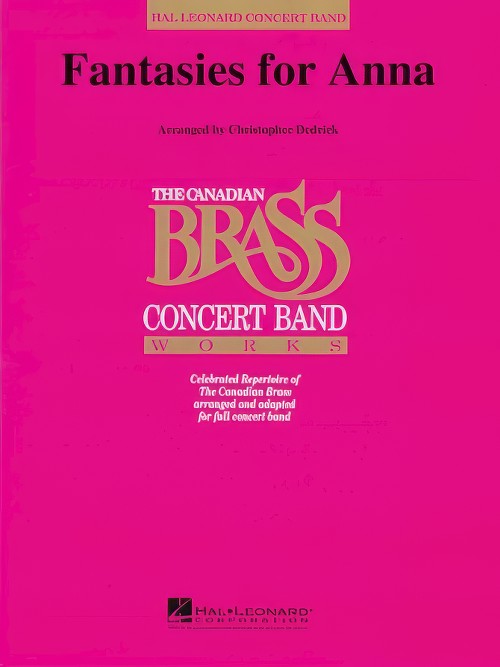 £64.99
£64.99Fantasies for Anna (Concert Band - Score and Parts) - Bach, Johann Sebastian - Dedrick, Christopher
Four Bach pieces have been transformed into a refreshing and delightful concert suite by Christopher Dedrick. His creative, whimsical approach and exquisite orchestration are a joy to perform and will charm any audience. I. Mussette in D Major II. Minuet in G Major III. Minuet in D minor IV. March.
Estimated dispatch 7-14 working days
-
 £76.99
£76.99Discoduction (Concert Band - Score and Parts) - De Haan, Jacob
Jacob de Haan especially composed this piece for the by now well-known C.D. Soli Brass. Not just a C.D. opener, this piece is an excellent concert starter. The title is a combination of the words Introduction and Disco. The composition is made up of a majestic opening, following in a section in disco style based on the same themes.Duration: 1:30
Estimated dispatch 7-14 working days
-
 £65.00
£65.00Allegro from Concerto for Trumpet (Trumpet Solo with Concert Band - Score and Parts) - Mozart, Leopold - Clark, Andy
A showcase for your trumpet star, Andy Clark's tasty transcription of the "Allegro" from Leopold Mozart's well known "Concerto in D" has been lowered to the key of Bb which retains the same fingerings as playing the original on a D trumpet. The band accompaniment provides an authentic backdrop for your soloist while featuring the woodwind section on this classic staple of solo Trumpet literature. First class all the way!
Estimated dispatch 7-14 working days
